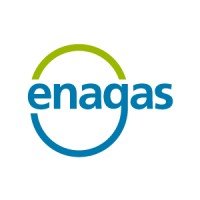Inexpensive Catalysts and Syzygy Plasmonics Photoreactors open the door for broader hydrogen adoption

Scientists from Syzygy Plasmonics have engineered a new kind of reactor designed to work with earth-abundant, light-activated catalysts created by a joint team from Rice University’s Laboratory for Nanophotonics, Syzygy Plasmonics, and Princeton University’s Andlinger Center for Energy and the Environment.
The reactors use light instead of heat from combustion to power chemical reactions and can produce clean-burning hydrogen fuel from ammonia.
Members from the photocatalyst development team include Syzygy co-founders and Rice professors Naomi Halas and Peter Nordlander, Syzygy co-founder and CTO Suman Khatiwada, and Syzygy Lead Scientist Hossein Robatjazi. All four contributed to a recent publication in the highly prestigious journal of Science detailing the effectiveness of iron-based, earth-abundant photocatalysts. As reported by Rice, the inexpensive copper-iron catalysts tested in their labs maintained efficiency at a scale 500 times larger when tested in a Syzygy photoreactor.
“Photon-driven chemistry represents a new frontier that is changing chemical engineering and manufacturing,” said Suman Khatiwada. “It is still in its infancy. Which is why we had to build an entirely new kind of reactor to bridge the gap between research and commercialization. With the recent closing of our Series-C fundraise, we are taking Syzygy reactors to market to produce zero-emissions hydrogen from ammonia.”
Some energy importing countries face serious challenges in achieving decarbonization goals. Rather than continuing to import liquid natural gas that contributes to greenhouse gas emissions, some are considering transitioning to green ammonia. In liquid form, ammonia is a carbon-free molecule that is more easily compressed, transported, and stored than hydrogen. Upon arrival at port or inland locations, the ammonia can be converted to hydrogen as a clean fuel source.
Traditional ammonia cracking requires combustion of fossil fuel or ammonia itself to heat a massive chamber to power the reaction. This is a long, slow, inefficient process that releases greenhouse gases when fossil combustion is used. Adding to the environmental impact, many effective ammonia cracking thermocatalysts currently use rare metals like ruthenium.
Syzygy ammonia-splitting reactors use high-efficiency LED light to replace combustion. Not only does this dramatically reduce greenhouse gas emissions, but low-temperature, low-pressure reactions enable the reactors to be built of inexpensive materials like aluminum and glass. Shifting to widely available, affordable catalyst materials reduces dependency on rare metals and acts to further reduce costs. Combining Syzygy reactors and inexpensive catalysts has the potential to reduce production costs of lower-carbon hydrogen to the point where importing ammonia as an energy carrier is a competitive option.
“The work we are doing at Rice and Syzygy combines leading research efforts, technology breakthroughs, and advanced engineering,” said Hossein Robatjazi. “The thought of using earth-abundant catalysts with inexpensive, all-electric reactors wasn’t even a concept a decade ago. With commercialization agreements already in place, we are accelerating our efforts to help decarbonize the chemical industry. And we’re starting with low-carbon-intensity hydrogen.”
